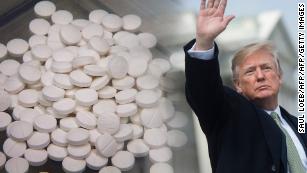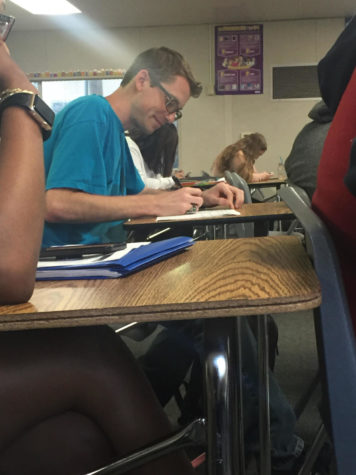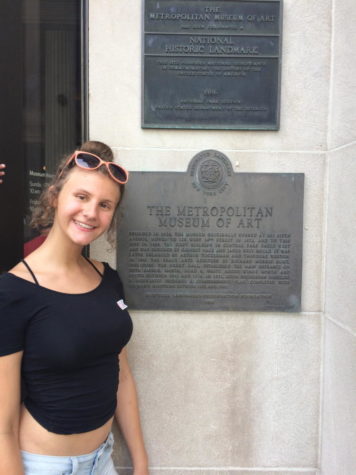Trump’s Exotic Opioid Plan

US President Donald Trump waves after the annual Friends of Ireland luncheon at the US Capitol in Washington, DC, March 15, 2018. / AFP PHOTO / SAUL LOEBSAUL LOEB/AFP/Getty Images
March 23, 2018
Taking place on Monday 19, President Donald Trump announced his three-part plan that is supposed to intercept with the opioid epidemic. Apparently Trump is ready to be implementing “tough on crime” punishments.
With a law signed by President Bill Clinton in 1994, when there is fear of drug crimes, punitive justice policies can be put into place.
Although the government has this power of being able to execute drug traffickers, not a single person has undergone punishment in fifteen years. According to President Trump, between two and three thousand people are killed by each trafficker and absolutely nothing happens to them whereas if one bullet kills a person, the death penalty is used.
Ricky Holman, a student at ERHS, says, “I have uncles who used to be drug dealers and in that field and I suppose we are lucky that they were never given this harsh of a punishment.”
Congress has also been asked by the White House to decrease the levels in which imposing sentences for trafficking fentanyl is set at currently.
Mark Kleiman, a drug policy expert claisms that in 1980, there were close to 15,000 people behind bars for drug dealing. Today, there are approximately 450,000 people behind bars for drug dealing.
Studies have also found that increasing the severity of the punishment doesn’t solve the issue. If it does anything, it simply slows how quickly drugs are flowing.
Mr. Holman also states, “Making the death penalty will not stop the flow of drugs, as there are always more people willing to get into that dangerous game.”
Trump’s proposed federal budget includes $3 billion in 2018 for funding and $10 billion in 2019. With many media campaigns to increase public awareness, the $13 billions will be collected within the two years. Now, the plan is to wait and see what the administration does with this great idea.

Photo Credits: Maddie Gorrie

